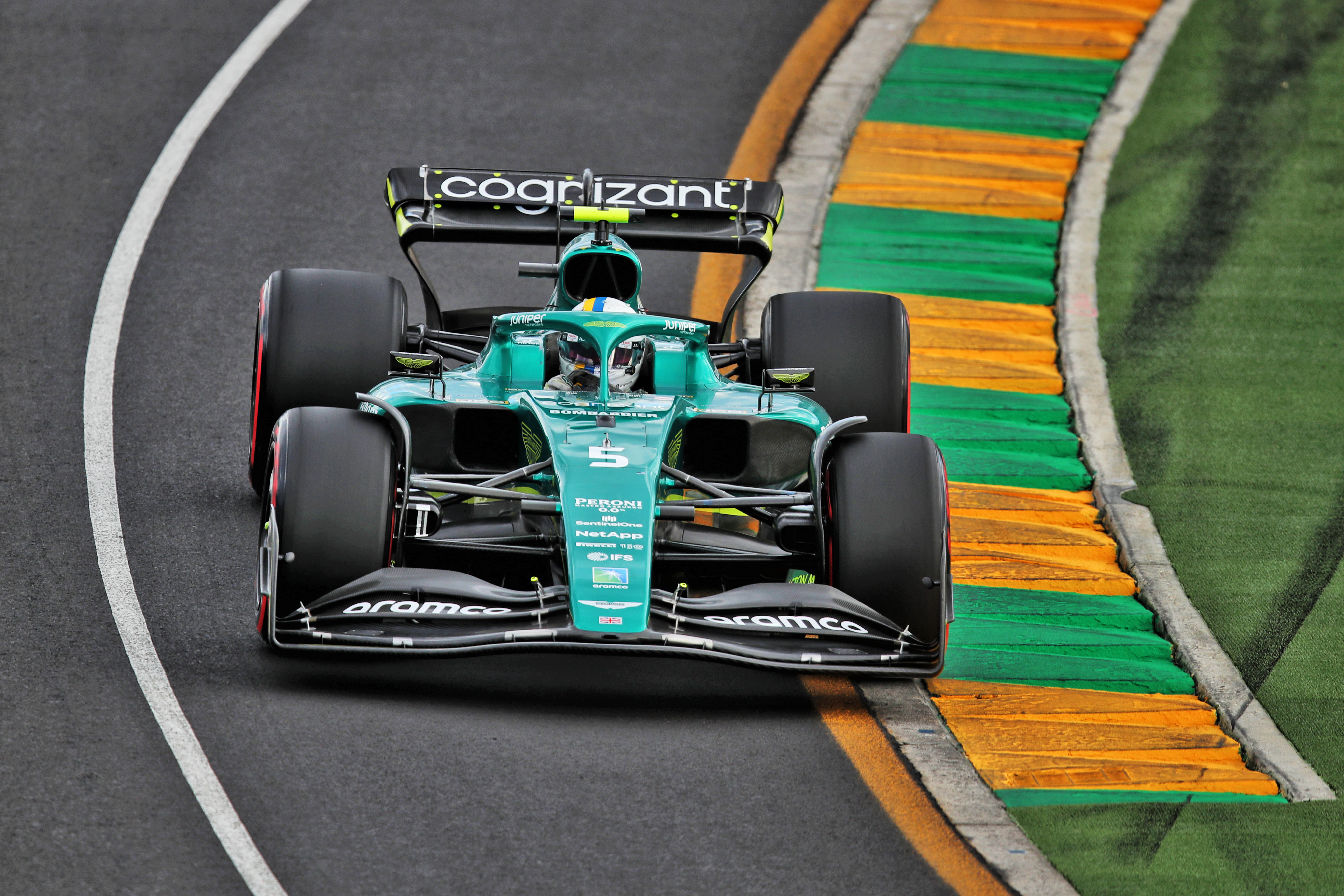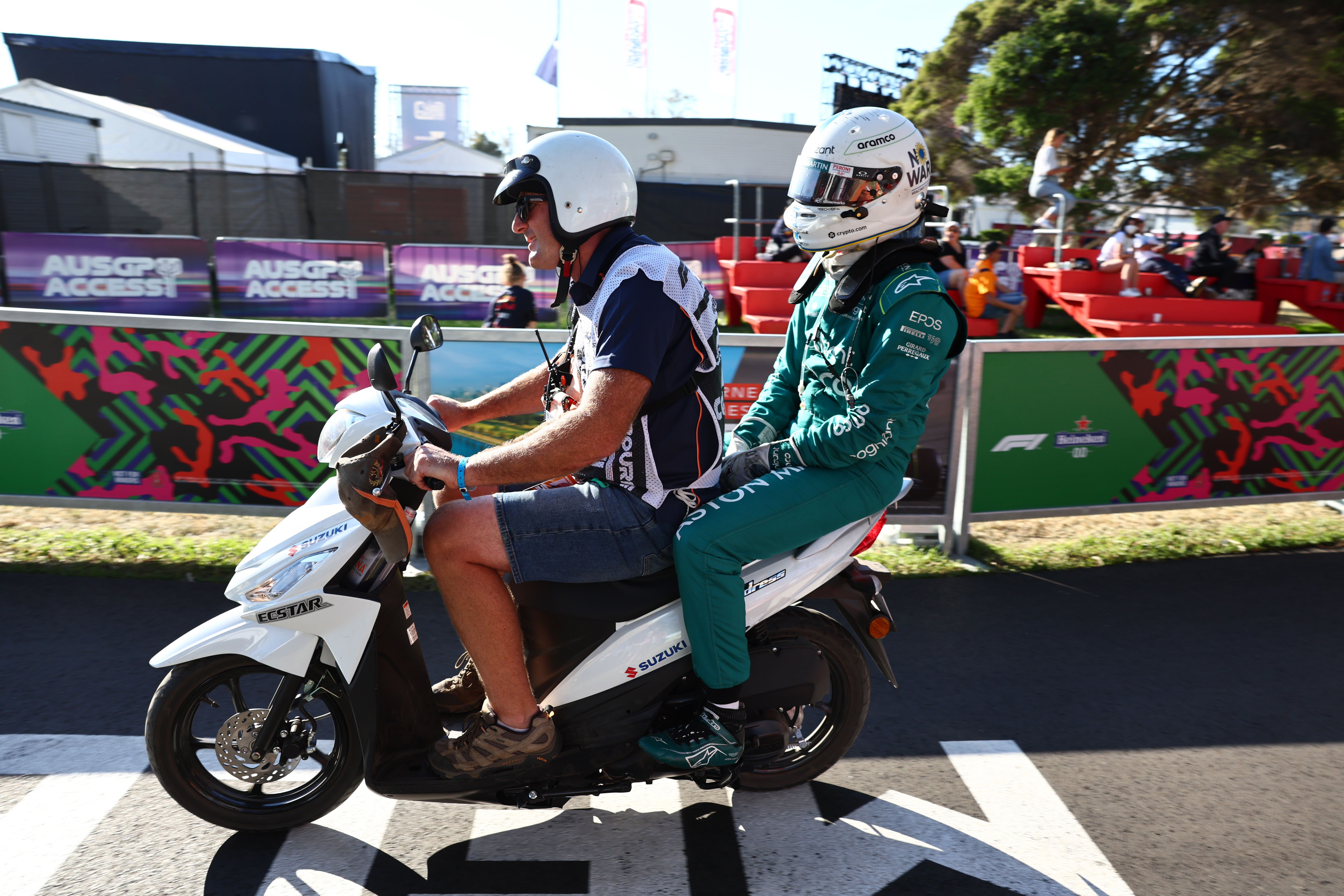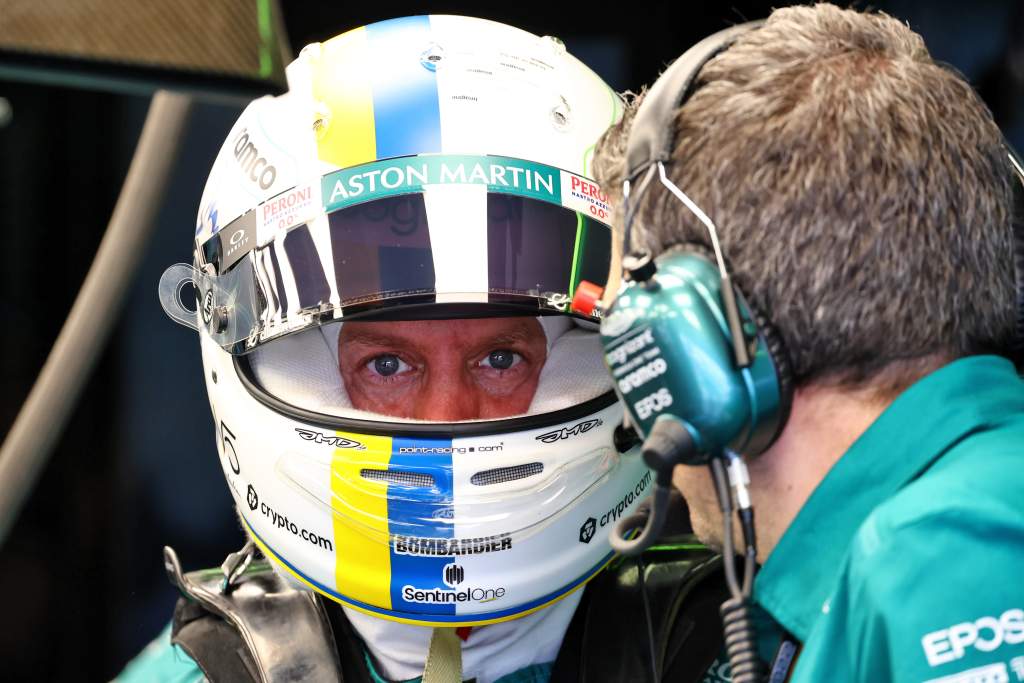Up Next

Sebastian Vettel’s belated start to the Formula 1 season was wrecked by an appalling mix of misfortune and mistakes.
Returning from a two-race absence because he had COVID-19, Vettel completed just 48 laps of the Albert Park circuit over the course of the Australian Grand Prix weekend.
His comeback started with an engine failure towards the end of the opening practice session that forced him to miss the second Friday session as Aston Martin switched to a new Mercedes power unit.
Vettel then crashed out of final practice on Saturday with just five laps and no time to his name after losing control on the exit of the high-speed Esses.
That caused so much damage he would have missed qualifying entirely had a late red flag not delayed the conclusion to Q1 and allowed Vettel to get out and set a solitary lap time – which was a respectable one second away from a spot in Q2.
Vettel said that was “it was the result of a little bit of magic” from his Aston Martin but unfortunately for him and his team it was only a brief reprieve from the gloom.
He did well to avoid crashing into the barriers during a trip through the Turn 11 gravel early in the grand prix then suffered a race-ending shunt before the halfway mark.
Aston Martin team principal Mike Krack said the number of Vettel mistakes through the weekend was “not normal” but was not having a dig at Vettel with that comment.
Instead, he suggested Aston Martin itself had to bear responsibility.

Asked by The Race if there was anything for Vettel or the team to take away from such a disrupted comeback weekend, Krack said: “I think we really take something away from it. If someone like him, a four-time world champion, has these issues that he was having this weekend, this is not down to not driving [for the last two races]. Because he has driven the car.
“This is something that we need to really look at what car we provide him, what feedback he gets from the car.
“Because you will agree with me that him being off so much as he has been this weekend is not normal. And I do not think that this is related to having missed two races.
“He has been a multiple winner in Melbourne. He knows where he is here. He has had some tests with the car.
“It would be really easy to say, ‘Ah, he was not there for two weekends’.
“A driver of that class, we really need to check what tool we are giving him.”
Though Vettel has had a surprisingly high rate of mistakes across the last few seasons, Krack is correct in his observation that this many incidents in one week is abnormal.

Krack is unsurprisingly being slightly generous in defence of his star driver. Clearly, Vettel contributed to his own downfall. But there were a few mitigating factors.
Vettel went into the grand prix on the backfoot having had no opportunity to get into a rhythm all weekend. The primary cause of that was a reliability problem not of his own making. On a revised circuit, in a tricky car, after two race weekends on the sidelines, it would be delusional to pretend that has zero impact.
His FP3 crash was caused by a sudden snap through the second part of the Esses. Some important context here is that this was early in the first session after the third DRS zone, on the approach to the Esses, had been removed with very little warning.
At this high-speed section and without the help of the DRS to reduce some of the load at the rear of the car, the porpoising phenomenon would be exacerbated as a result.
Aston Martin is one of the team’s suffering most from this effect. It was suggested that, as a precaution, it had to compromise its set-up even more.
Vettel had been cautious through the left then the rear stepped out slightly through the right and while Vettel was able to catch it, his correction took him into the gravel and into the wall with the left-hand side of his car. Might the clearly nervy nature of the car have been influenced by this change?

It’s also worth noting that in the race Vettel’s trip into the gravel at Turn 11 and his near-miss with the barrier appeared to be caused by a sudden 30km/h tailwind into the corner, where he clearly couldn’t slow the car down enough and briefly locked his inside front tyre.
Finally, within the mistakes and even on ‘normal’ laps it is clear to see that the 2022 Aston Martin is simply a difficult car. In the first stint, for example, Vettel reported it was “bit on the nose at high speed” and had “understeer medium speed” – an unenviable balance.
That’s the case for the Vettel defence. Around all that, he is still a vastly experienced driver who made mistakes at key moments, and he was adamant he was suffering no physical after-effects from his time with COVID.
His FP3 crash contributed to his lack of mileage before qualifying and the grand prix and he felt his race-ending mistake – where he turned in too early for the left-hand Turn 4 and climbed over the apex kerb, sending him slightly too deep onto the bumpy kerb/run-off – was of his own making.
Asked by The Race how much his struggles were a mix of car being difficult to drive and not having mileage, Vettel said: “Probably a bit of both. Obviously I tried to get the best out of the car that I can and with hindsight maybe I was pushing too hard.
“Once I lost it there was no chance to come back.”

Unfortunately for Vettel, the nature of Aston Martin’s limitations means that he may often find himself struggling to take a difficult car to the limit. At least in the short-term.
Aston Martin is working to access what it is adamant is several tenths worth of performance in the AMR22 if it can run the car at its intended ride height.
But the porpoising problem “does not allow us to move forward” at the moment, according to Krack.
“We make progress, but we go to this barrier of porpoising, which does not allow us to exploit the progress that the guys have made,” he said.
“So, it’s quite frustrating also, that you have progress down the line, but you cannot exploit it on track.”
He added: “In Formula 1, if you’re not performing, it’s normally quite easy to identify.
“The reasons why teams are performing and others are not are lying with aerodynamics and weight at the moment.
“While we’ve made progress on the weight side, we struggle on the aerodynamics. This is something we need to really focus on.

“I don’t want to go into the complete details. But the reasons for the performance are normally in that area, and for us, it’s the same. And then everything becomes much more difficult.
“The better aero you have, the easier everything gets. The drivers are happy, the results are a bit better. And if not you put everything in doubt.”
Aston Martin’s fortunes are unlikely to be transformed unless the team can get on top of its key car constraint.
The only consolation for Vettel is that, on a personal level, the Australian GP is highly likely to be the nadir of his season.
“I’m sure it will get better,” he said. “It can’t get any worse.”









